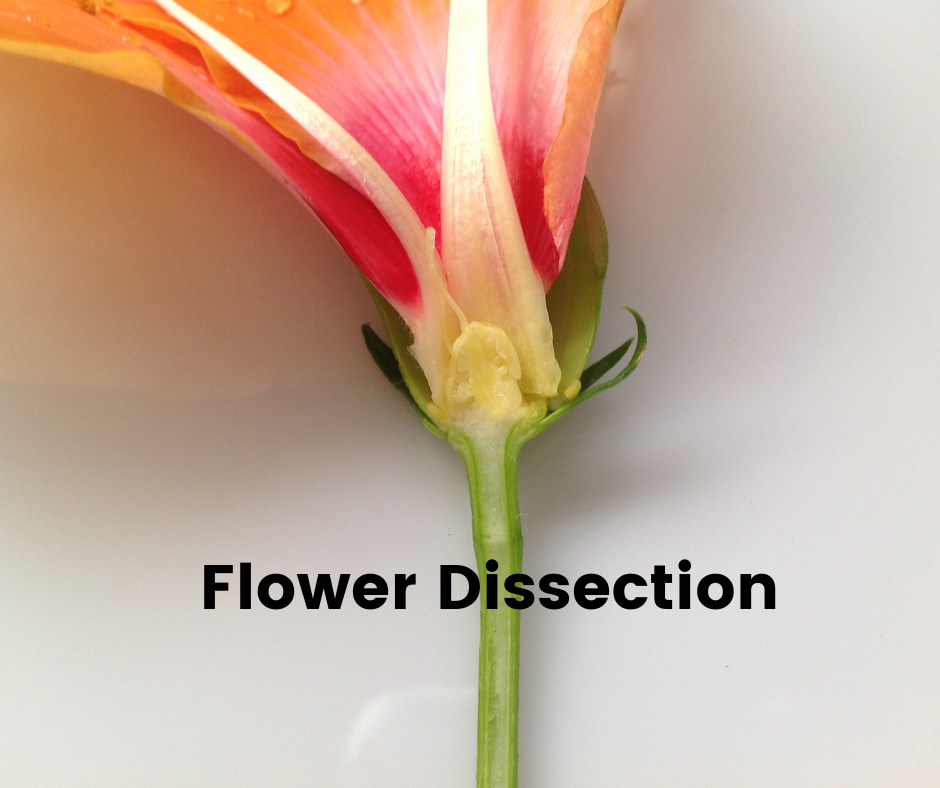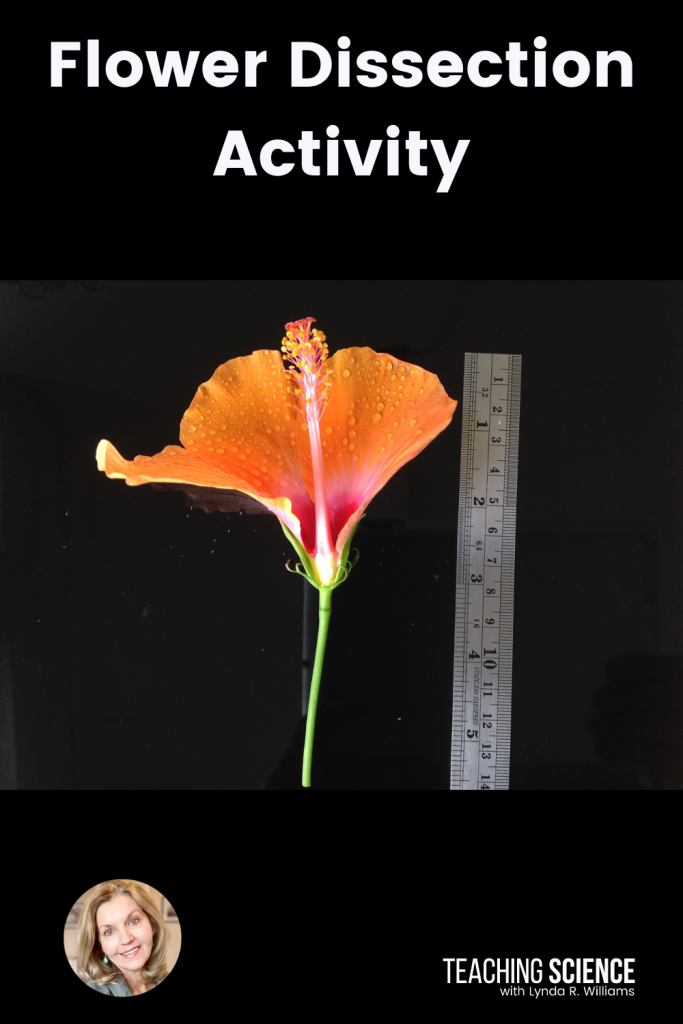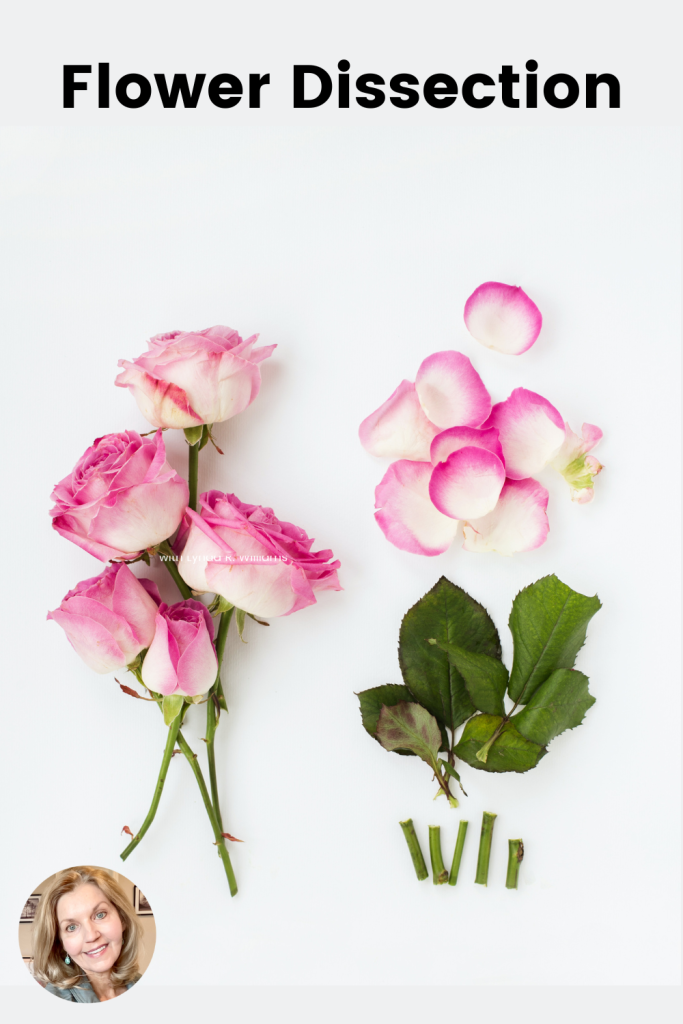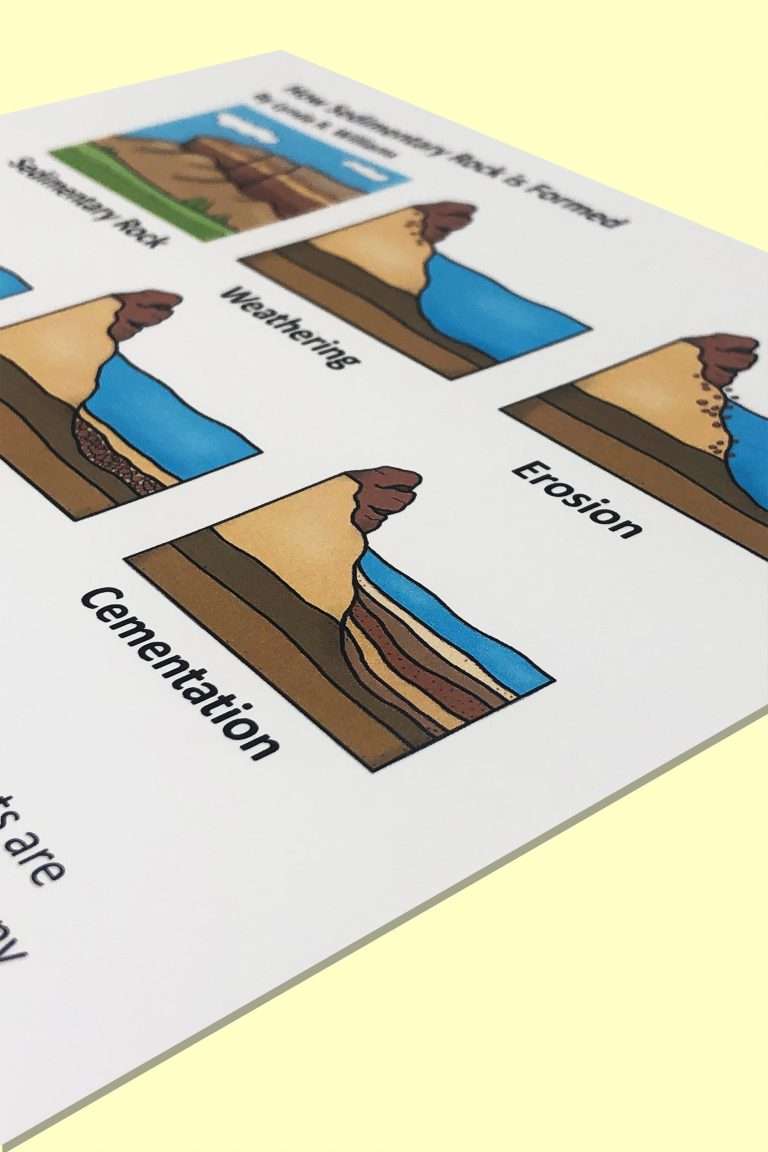Flower dissection can be a fantastic activity for students. It is easy to do, and they will discover all kinds of interesting information about the structure and function of flowers.

Flower Dissection
Are you ready to embark on a journey into the magical world of flowers? Flower dissection is a fantastic way to explore the intricate beauty of plants up close and learn about their anatomy.
Whether you teach 4th, 5th, 6th, or 7th grade, this hands-on activity is perfect for curious minds looking to unravel the mysteries of nature.

What do you need to get started with a flower dissection activity?
To start your flower dissection adventure, all you need is a fresh flower, scissors, a magnifying glass, and a curious spirit! Have students begin by carefully examining the different parts of the flower, such as the petals, stamens, pistils, and sepals. Have students observe each component’s colors, shapes, and textures. As students dissect the flower, they will discover how each part plays a vital role in the plant’s reproduction process.
When you look at the flower of a flowering plant, the most obvious parts are probably the flower petals. They can vary in size and shape, but are usually brightly colored. Their purpose is to attract insects that help to pollinate the flower. You might be surprised to learn that some flowers—in the botanical world they are called perfect flowers—have male and female parts, and each plays an important role during pollination. The male parts, called stamens, look like long stalks with a little round shape at their tip. They consist of a slender filament and a ball-shaped anther, which contains the plant pollen. This bright yellow or orange dust is what insects such as bees or flies carry from one plant to another when they are looking for nectar inside a flower.
That’s right! You do not need to start from scratch. I have planned the flower dissection activity in a 5 E Lesson, complete with a slide show and follow-up pages. You can try this 5 E Lesson on flower dissection free by joining my newsletter. Not only will you get this free lesson, you will also get tips and tricks and special offers delivered to your inbox.
Background Information on Flower Dissection
Background Information: Plants have male and female parts. (Teachers just ignore the giggles from the kids. Speak matter of factly about how all living things reproduce, and plants are living things, so they reproduce).
Flowers, the reproductive components of angiosperms or flowering plants, exhibit a wide variety of structures despite sharing common parts that might not be immediately apparent without close observation. These structures have undergone evolutionary changes to enhance the likelihood of pollination, which involves the fertilization of ovules through sperm cells present in pollen. Factors such as color, scent, nectar, and shape play crucial roles in attracting animal pollinators like insects, birds, and bats, as well as aiding in pollination by wind, rain, and other natural forces. The vibrant petals of a flower serve as a visual cue to animal pollinators, while the surrounding sepals, which can resemble green leaf-like structures, help protect the flower or may even be modified into petals themselves.
Lilies, tulips, daffodils, hibiscus,and gladiolus are the best flower types for flower dissection. I used a lily in my example. You need a flower for each group of students.
If daylilies are plentiful near you, getting someone to donate a flower for each student is possible. Daylilies have all the parts we are looking for, and the bloom prolifically
Some plants have exclusively male parts. Some flowers have exclusively female parts. More commonly, plants have both male and female parts. Plants do not move, so they need help moving pollen from male to female parts. Even flowers that have both male and female parts need to cross-pollinate with other plants to flourish.
Cross-pollination is the transfer of pollen from the male reproductive organ (an anther) of one plant to the female reproductive organ (a stigma) of another plant. Insects and wind are the main agents of cross-pollination.
Fertilization is a crucial process in plant reproduction, where a pollinator plays a vital role in transferring pollen from the anther of one flower to the stigma of another. This transfer of pollen helps in preventing self-pollination, ensuring genetic diversity. Once the pollen reaches the stigma, it forms a tube that travels through the style to reach an ovule. The nucleus of the pollen sperm then merges with the female nucleus within the ovule, leading to fertilization. Following fertilization, the ovule develops into a seed, and the ovary transforms into a fruit, facilitating seed dispersal.
Angiosperms exhibit a remarkable diversity in the organization of their sexual organs. Some flowers may possess stamens without a pistil, or vice versa. While some flowers have both male (stamen) and female (pistil) parts within the same flower, known as “perfect” flowers, others may have separate male and female structures on different flowers of the same plant. Additionally, certain plant species may exclusively have male or female reproductive structures within an individual plant. This diversity in sexual organ arrangement showcases the adaptability and complexity of angiosperms in their reproductive strategies. There is so much to learn through flower dissection.
Not interested in the FREE lesson, you can purchase the Flower Dissection Lesson in my store





